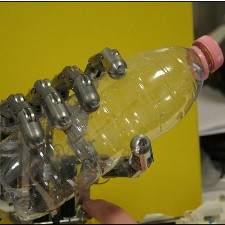Tel Aviv University researchers have successfully connected a prosthetic hand to existing nerve endings, allowing the user to actually feel it.
Robin af Ekenstam of Sweden, the project’s first human subject, has not only been able to complete complicated tasks like eating and writing, but says he can also ‘feel’ his fingers once again.
“Perfectly good nerve endings remain at the stem of a severed limb,” says Professor Yosi Shacham-Diamand of TAU’s Department of Engineering. “Our team is building the interface between the device and the nerves in the arm, connecting cognitive neuroscience with state-of-the-art information technologies.”

“After only a few training sessions, he is operating the artificial hand as though it’s his own,” says Prof. Shacham-Diamand. “We’ve built in tactile sensors too, so the information transfer goes two ways. These allow Ekenstam to do difficult tasks like eating and writing.”
Ekenstam said, “I am using muscles which I haven’t used for years. I grab something hard, and then I can feel it in the fingertips, which is strange, as I don’t have them anymore. It’s amazing.”
With the help of the TAU team, the SmartHand project was able to integrate recent advances in today’s ‘intelligent’ prosthetic hands with the basic features of a flesh-and-blood hand. Four electric motors and 40 sensors are activated when the SmartHand touches an object, not only replicating the movement of a human hand, but also providing the wearer with a sensation of feeling and touch.
While the prototype looks very ‘bionic’ now, the scientists plan to equip it with artificial skin that will give the brain even more tactile feedback. The researchers will also study amputees equipped with the SmartHand to understand how to improve the device over time.







